Looking for a gluten free cake that’s fun and full of flavor? This flourless Orange Upside Down Cake is made with almond flour and is just what you’re missing in your life! It is soft, moist, extra zesty, and oh so delicious.

This upside down Orange Almond Cake is a citrusy version of my Pear Almond Cake. It is made entirely with almond flour, with an orange juice caramel and orange slices at the bottom!
When flipping over to serve, this Orange Upside Down Cake is a beauty. And I promise you that it is as delicious as it is beautiful.
Table of Contents
Ingredients and substitutions
As always, you’ll find the complete list of ingredients and quantities in the recipe card at the end of this post. Below are some notes and substitution tips:
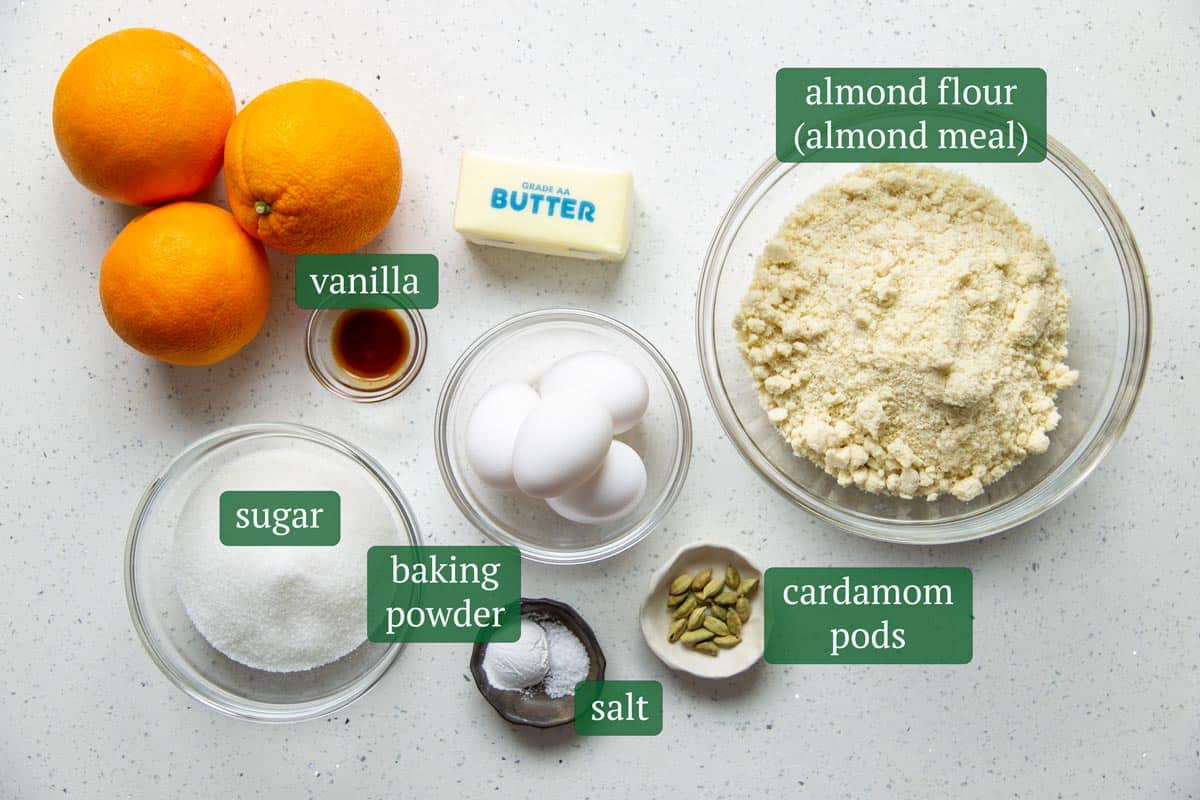
- Oranges – you’ll need whole oranges for the upside down layer and orange zest to flavor the cake batter. I used a total of 3 oranges but you may need more.
- Almond flour/almond meal – I used finely ground blanched almond flour, but unblanched almond meal should also work in this recipe. You could ground your own almonds if you wish, just use 280 g of whole almonds by weight. You could also use a different type of nut to your liking, again, use the weight for substitution. Pistachio would go really well with orange and cardamom in this recipe.
- Granulated sugar – used both in the caramel topping and to sweeten the cake batter.
- Butter – unsalted butter is used. If using salted butter, omit the salt. However, I think salted butter will contain more salt than needed for this recipe and may make the cake saltier than intended.
- Eggs – 4 eggs are used for binding since almond flour has no gluten. They are also used to create volume, as many almond cake recipes call for beating the egg whites separately and then folding it into the batter. I tried it both ways and found that it doesn’t really make a difference. This recipe is super forgiving so I just beat the egg yolks and whites all together in one step.
- Vanilla extract – as always, use pure vanilla extract for the best flavor.
- Baking powder – to add a little lift in the cake.
- Salt – I always use kosher salt for all my recipes. If using table salt, use about ⅔ of the amount called for in the recipe.
- Cardamom – omit if you don’t like the flavor of cardamom. I used freshly ground cardamom, which is much more potent than pre-ground. If you’re not using freshly ground cardamom, increase the amount to ½ teaspoon to amp up the flavor, or as much or as little as you prefer.
How to make Orange Upside Down Cake
The following instructions, step-by-step photos, and tips are here to help you visualize how to make the recipe. You can always skip straight to the printable recipe card at the end of this post.
First, prepare the upside down orange layer
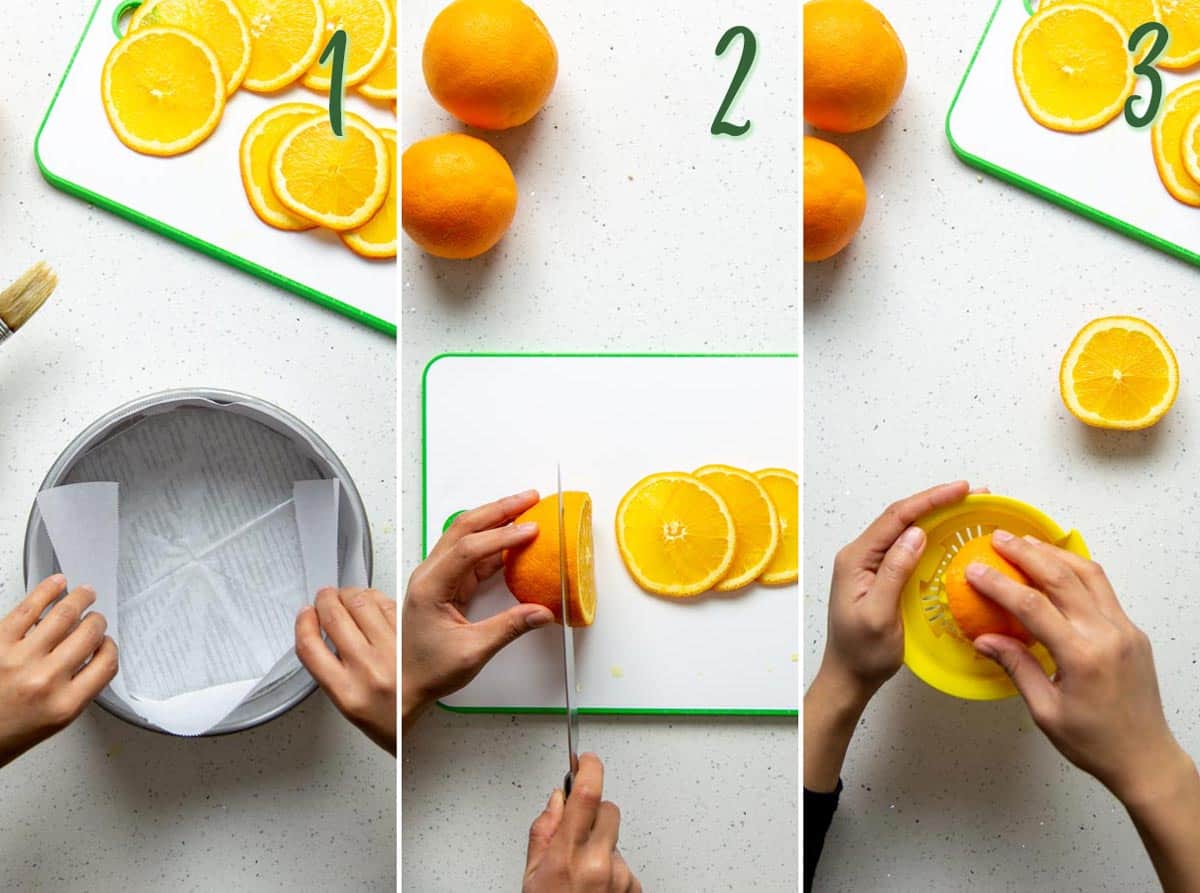
- Butter the cake pan and line the bottom as well as sides with parchment paper.
- Slice the middle part of the orange into about 9 thin slices, under ⅛”, leaving the two ends for juice. Note: I used just 1 whole orange for this step. Cut off one end first, so when you start cutting slices, they are almost the same size, ie. you don’t have some that are way too small from being closer to the end. If you aren’t able to cut really thin slices, feel free to use 2 oranges.
- Juice the two ends of the orange and measure out 2 tablespoons of orange juice. Note: If you don’t have enough orange to get 2 tablespoons of juice, feel free to use another orange here, or use the one you will zest for the cake.
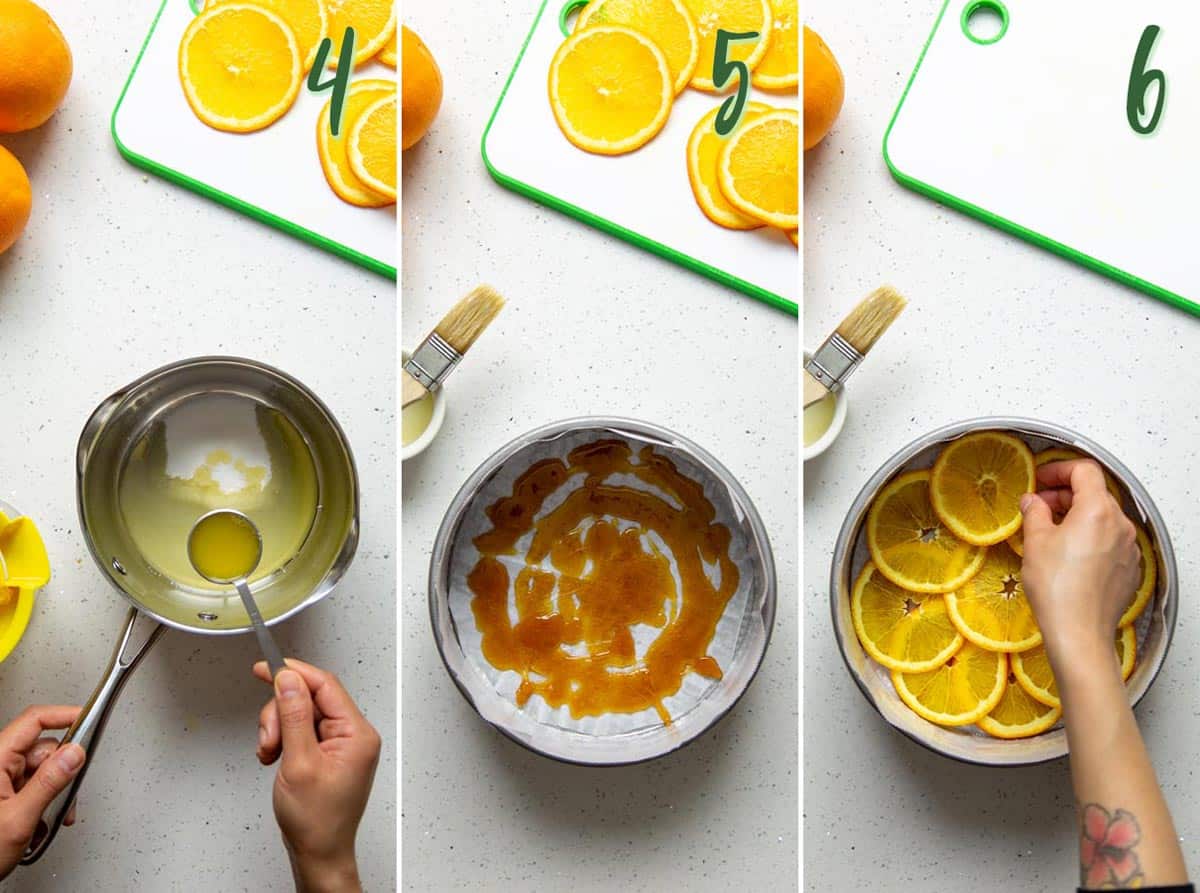
- Mix orange juice with ⅓ cup of granulated sugar. Cook the sugar mixture over medium heat until caramelized.
- Spread the caramelized sugar over the bottom of the previously prepared cake pan. Tip: work quickly as caramelized sugar can solidify quickly. Use a spatula to spread it if needed, but don’t worry too much if it doesn’t cover the bottom surface completely.
- Layer the orange slices on top of the caramelized syrup so that they cover the entire surface of the cake pan while overlapping each other. Set aside.
Make the gluten free orange almond cake
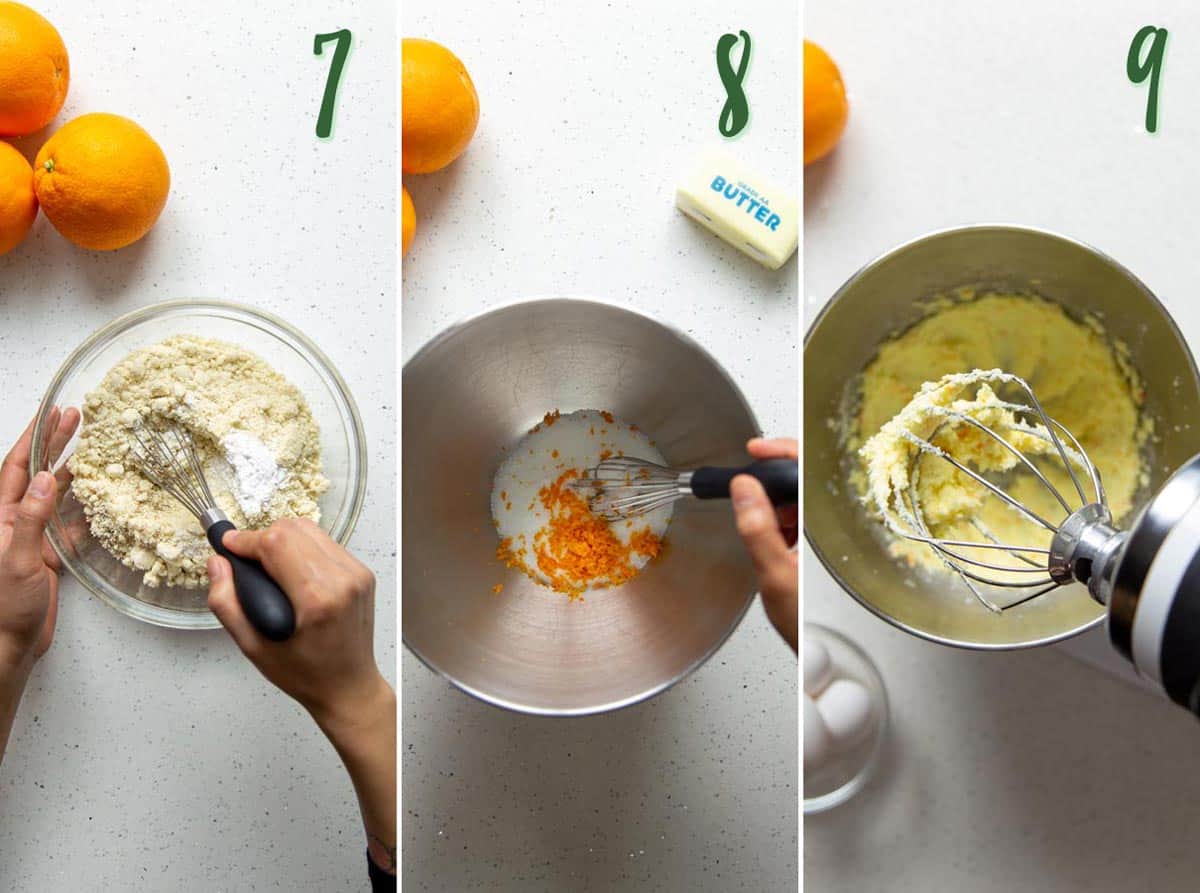
- In a medium mixing bowl, whisk together almond flour, salt, baking powder, and cardamom until distributed evenly.
- Whisk together sugar and orange zest. Note: This orange zest should come from another orange or two, not the one you were cutting into slices earlier.
- Add the softened butter and beat until fluffy.
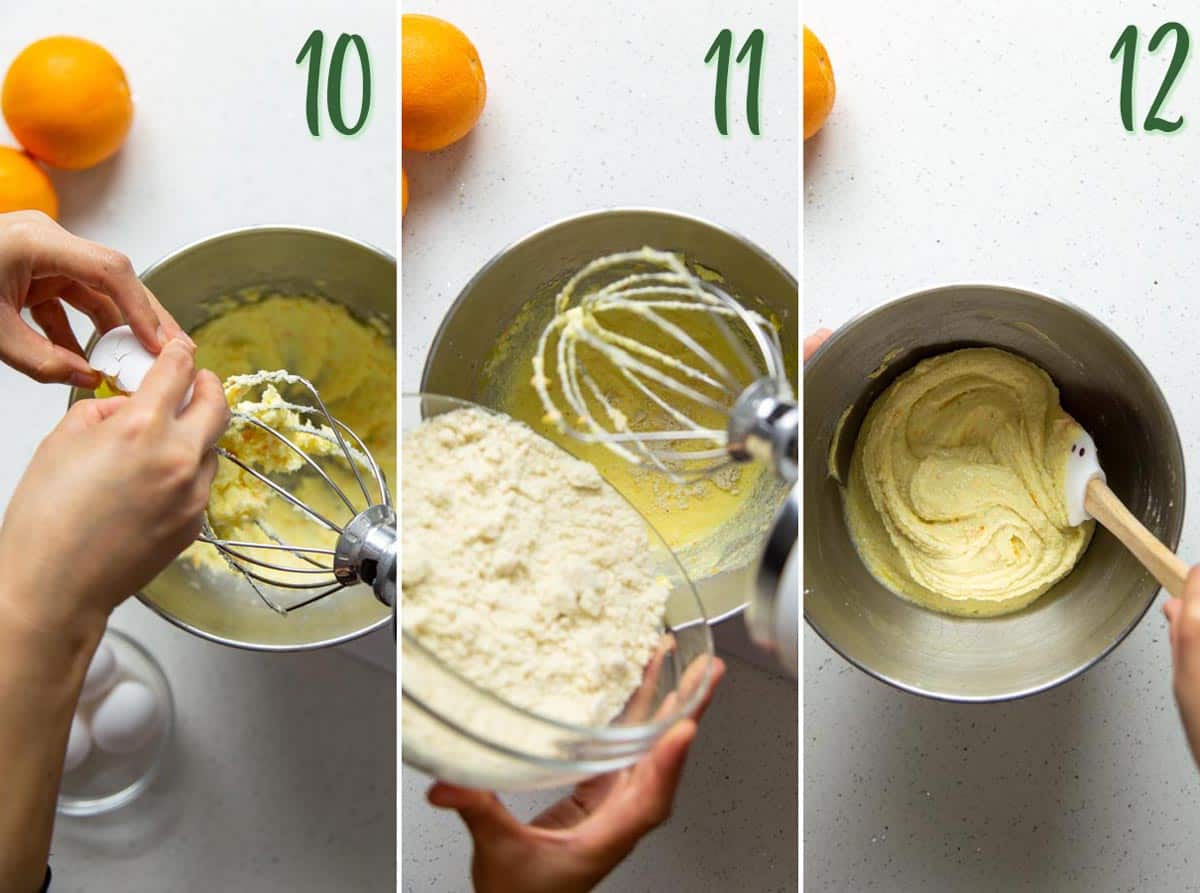
- Add vanilla extract, and one egg at a time while beating, allowing each egg to incorporate completely before adding another.
- Add the almond flour mixture to the wet ingredients and mix until smooth.
- Scrape the bowl with a spatula to ensure the batter is mixed thoroughly. Tip: don’t worry about overmixing since this cake is made with gluten-free almond flour.

- Pour cake batter into the prepared cake pan over the top of the orange slices.
- Smooth out the top with a spatula.
- Bake until golden brown.
More baker’s tips
- Make more caramel – if you like a little more caramel for the topping, double the amount for more substantial coverage at the bottom of the cake pan.
- Make it dairy free – a reader wrote in that she successfully used a plant-base butter substitute to make this a gluten free and dairy free orange almond cake.
- Double the recipe – you should be able to double this recipe with no issue.
Storage
This cake can be stored covered at room temperature for 1 – 2 days, beyond that I recommend keeping it refrigerated, it will last up to a week.
I did not try freezing this cake, though I suspect the caramelized orange layer would get soggy once frozen and thawed. I do not recommend freezing.
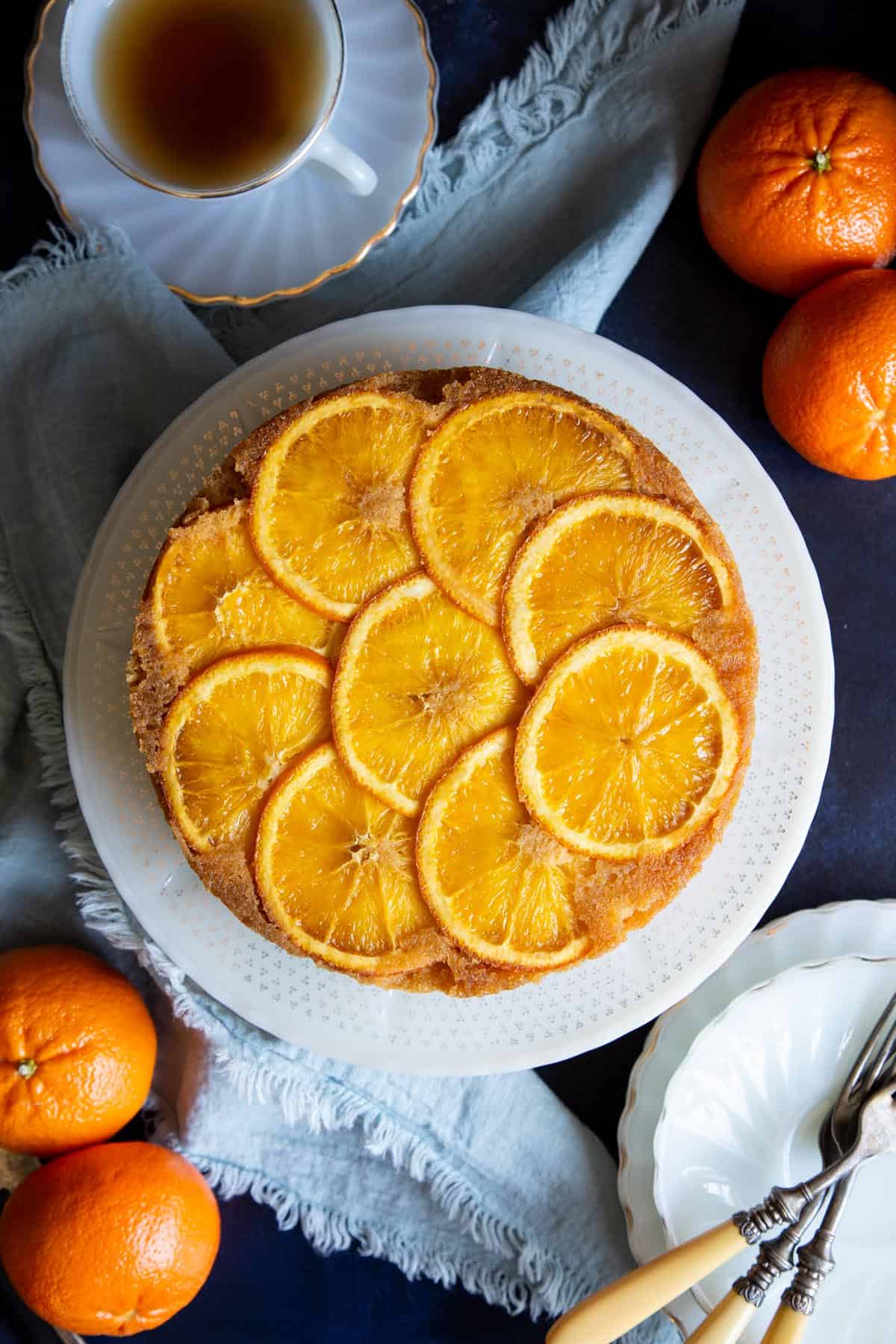
FAQs
What type of orange can I use for this cake?
Any variety of orange will work for this cake, such as:
- Navel orange – this is what I used. Navel oranges tend to be quite large so I only needed 1 orange for the upside down layer.
- Cara cara – these are one of my favorites for flavor and their vibrant orange color flesh, but they tend to be a little smaller so you’ll probably need 2 oranges to cover the bottom of the cake pan completely.
- Blood orange – I love these for color, but they can be very small so you’ll probably need several oranges for the upside down layer.
Noting again that you will need additional oranges for zesting. The cake portion contains 1 tablespoon of orange zest. A quick tip: whenever I have extra oranges or any citrus for that matter, I zest them and freeze the zest, so I can have citrus zest for baking anytime I’d like.
Should I peel the oranges?
I did not peel the oranges in this recipe. The bottom layer calls for very thinly sliced oranges, keeping the peel on will make slicing it easier and keep the slices well intact. You won’t be able to taste the bitter pith in the cake, I promise.
Can I use lemons instead of oranges?
I’m not sure! I haven’t tried it but I think lemon will yield a more bitter upside down layer due to the higher pith to flesh ratio. However, since the slices for this layer are sliced very thin, it may work without any modifications.
Some modifications you could try are removing the rind from the lemon slices after you have sliced them and increasing the amount of sugar in the caramel topping to offset the sourness of the lemons.
Let me know if you try this cake with lemon!

Serving suggestions
I serve this orange almond cake just the way it is. The caramelized upside down orange layer already made this cake special without any added decoration or garnishing. However, creamy toppings are always welcome on cake:
- Yogurt is an excellent choice to add freshness and tartness to play against the sweetness of the cake. Plain yogurt is best, regular or Greek yogurt will both work.
- For a richer alternative, a dollop of homemade whipped cream on top or on the side would be lovely.
- Better yet, add a scoop of vanilla ice cream on the side of a slightly warm slice of cake.
- If you want something a little different, a mascarpone whipped cream flavored with orange zest like the one on these Pistachio Cupcakes would be a wonderful topping.
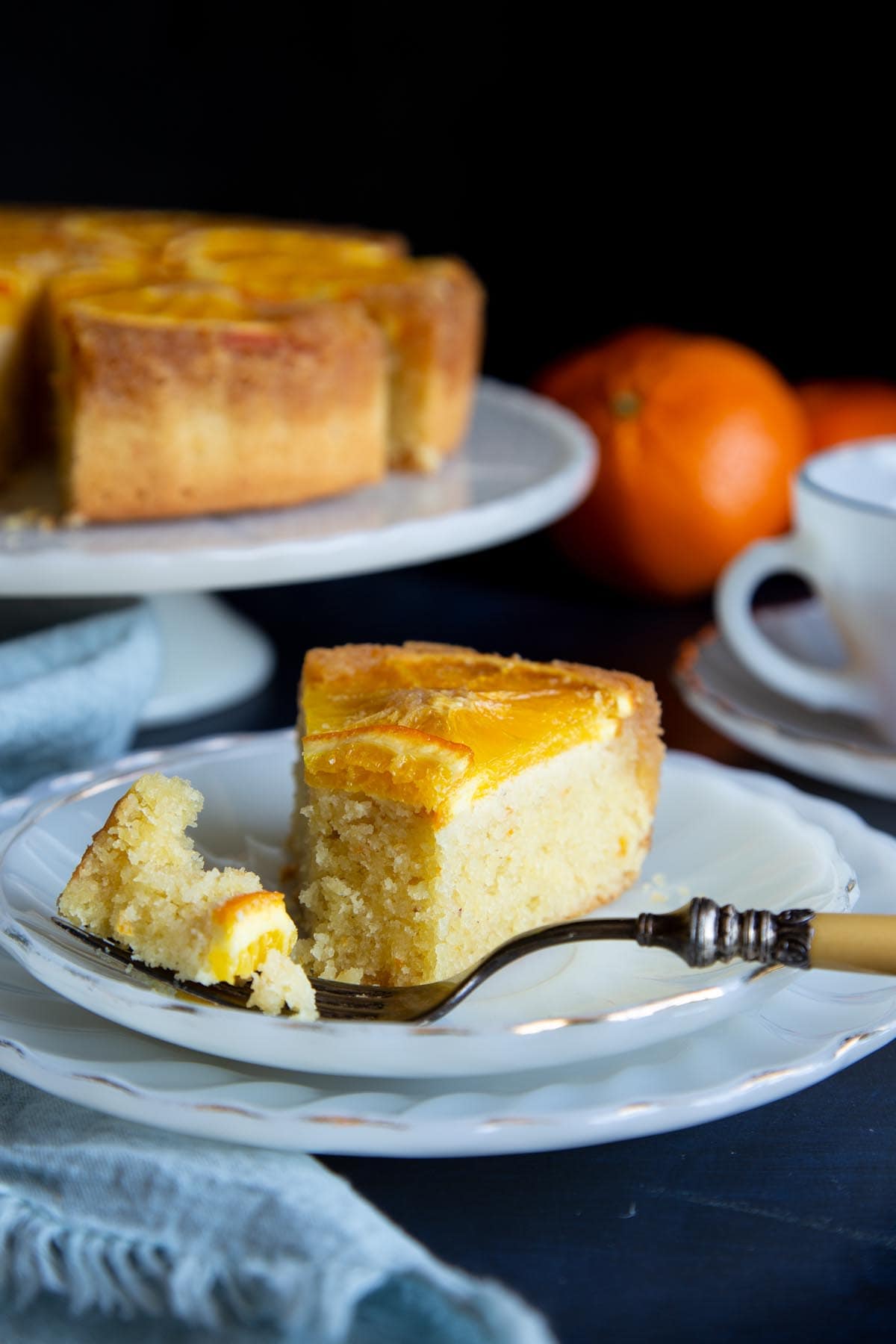
More gluten free recipes
Hungry for more?
Gluten Free Upside Down Orange Almond Cake

Equipment
Ingredients
Topping
- ⅓ cup granulated sugar, 66 g
- 1 large navel orange
Cake
- ⅔ cup granulated sugar, 133 g
- 1 tablespoon orange zest, from 1-2 oranges
- 4 oz unsalted butter, room temperature, 113 g
- 4 large eggs, room temperature
- 1 teaspoon pure vanilla extract
- 2 ½ cup almond flour, 280 g, packed
- 1 teaspoon baking powder
- ¼ teaspoon kosher salt
- ¼ teaspoon cardamom, freshly ground, optional
Instructions
- Preheat the oven to 350°F.
- Butter and line an 8” round cake pan with a piece of round parchment paper to cover the bottom. Butter the parchment paper as well and set aside.
- Prepare the upside down orange layer: Slice the middle part of the orange into about 9 thin slices, under ⅛”, leaving the two ends for juice.
- Juice the two ends of the orange and measure out 2 tablespoons of orange juice. Mix orange juice with the ⅓ cup of granulated sugar. Cook the sugar mixture over medium heat until caramelized. Spread the caramelized sugar over the bottom of the prepared cake pan.
- Layer the orange slices on top of the syrup so that they cover the entire surface of the cake pan while overlapping each other. Set aside.
- Make the cake batter: In a medium mixing bowl, whisk together almond flour, salt, baking powder, and cardamom until distributed evenly. Set aside.
- Whisk together sugar and orange zest, then add the softened butter and beat until fluffy.
- Add vanilla extract, and one egg at a time while beating, allowing each egg to incorporate completely before adding another. Scrape down the side and bottom of the mixing bowl as necessary.
- Add the almond flour mixture to the wet ingredients and mix until smooth.
- Pour cake batter into the prepared cake pan over the top of the orange slices. Even out the top with a spatula.
- Bake for 45 – 50 minutes until the top is golden brown, the center is no longer jiggly, and a toothpick inserted comes out clean.
- Remove the cake from the oven, place it on a wire rack and let it cool completely in the pan before inverting it onto a serving plate.
Notes
- Any variety of orange would work in this recipe. Navel orange is usually very large so I only needed 1 orange. If you’re using blood orange or anything smaller, you may need a few to completely cover the bottom of the pan.
- I used finely ground blanched almond flour, but unblanched almond meal should also work in this recipe.
- If you’re not using freshly ground cardamom, increase the amount to ½ teaspoon to amp up the flavor, or as much or as little as you prefer. Note that freshly ground cardamom is much more potent than pre-ground.
- Work quickly with the caramelized sugar as it can solidify quickly. Use a spatula to spread it around the bottom of the cake pan if needed but don’t worry too much if it doesn’t cover the surface completely.
Nutrition
Nutrition information is automatically calculated, so should only be used as an approximation.
 Like this recipe? Rate & comment below!
Like this recipe? Rate & comment below!This post may contain affiliate links. For more details on how we utilize affiliates, ads, and sponsored content, see our full disclosure policy. Thank you for your continued support, which enables us to keep bringing you delicious recipes, at no extra cost to you.


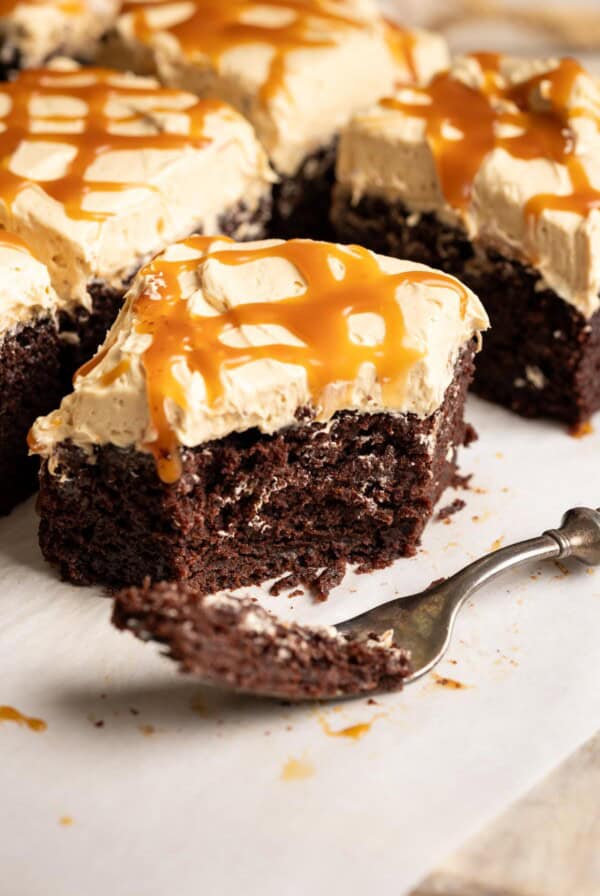











Great recipe! Worked well with Meyer lemons. Added a little extra lemon juice to the syrup and a little extra zest to the batter for some more zing!
Thank you for trying the recipe, Milly, and for taking the time to review it! I’m glad it worked well with Meyer lemons, what a great variation.
Kinda confusing order of operations, make sure to zest your orange before cutting it! i’m not an advanced chef so cutting 9 thin slices from only PART of a orange was kinda difficult for me, and left me with no ends to juice from. I ended up using three oranges, fully sliced 1.5 and then used the juice from another Full orange, which gave me 2 tablespoons. I had to make the syrup twice because the first time I actually caramelized it when in reality it’s just supposed to be a syrup.
Hi Delaney, I apologize if the directions weren’t clear for you and I do appreciate you taking the time to leave a comment which will be helpful to others. The zest should come from separate oranges, not the one you are cutting into slices. I do want to also clarify that the “syrup” is caramelized and not just a syrup, it can solidify quickly, that’s why I had a note to work quickly to transfer it to your pan, but I’m assuming the syrup still worked out for your cake which is good to know.
This is one of the most delicious cakes I have ever made! It has become a go-to recipe for any celebratory event. It is always very impressive and because of the moistness, travels well and keeps for a couple of days.
I will caution you that the caramelized sugar is a bit tricky, so make sure you find your favorite source to guide you – too light and it’s just a syrup, too dark and it becomes difficult to eat. I have learned that I prefer this cake with extra syrup, so I make more.
I have also doubled the recipe successfully and made a dairy-free version (using a plant-based butter). I have yet to make a fully vegan version, but I imagine it would be simple to replace the eggs with any standard egg replacer, as long as the liquid volume is maintained.
Thank you so much for the review, Mila! And I appreciate all the tips you’ve provided for others!